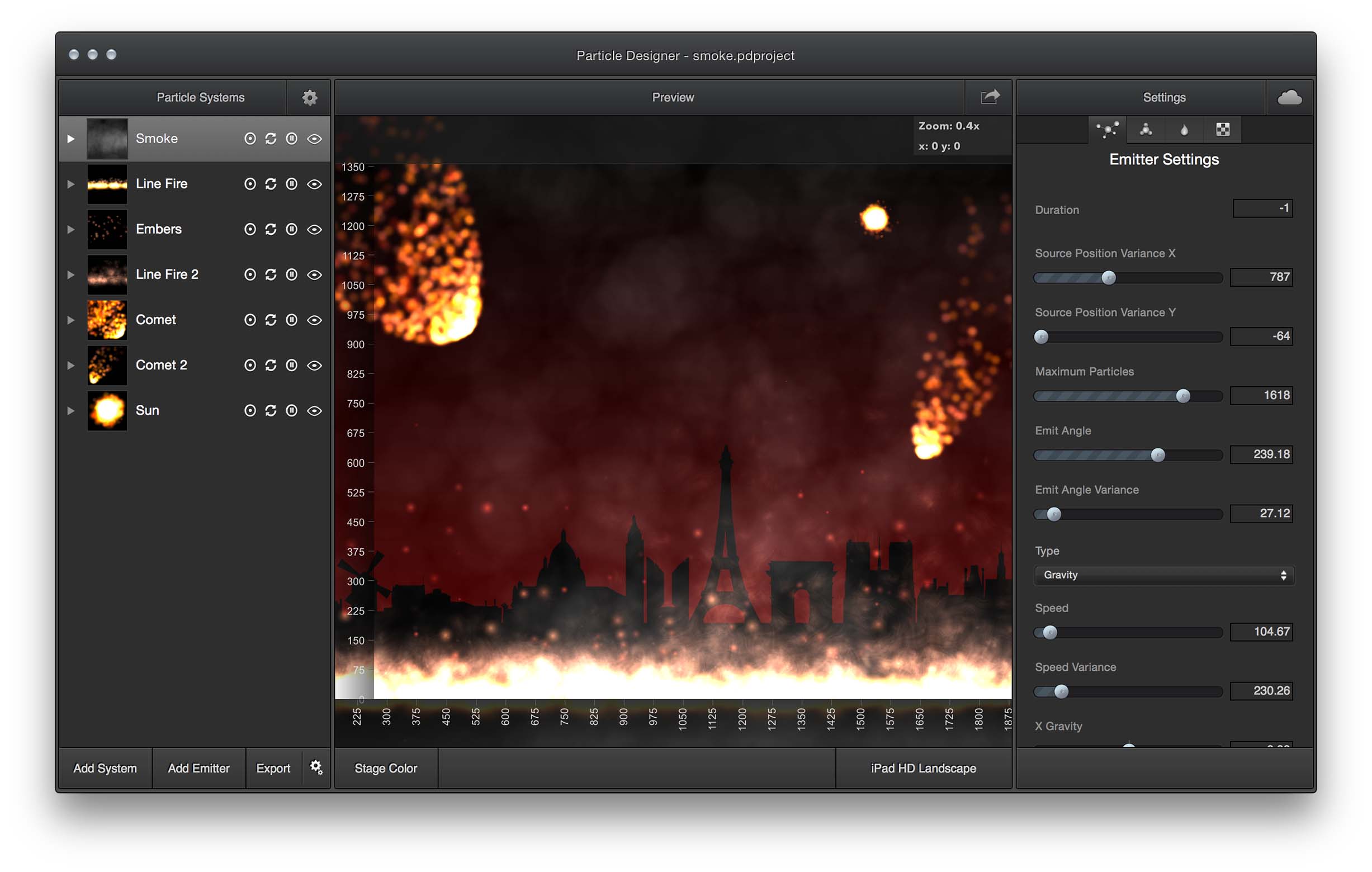

In Particle, select the particle instance to emit.Select the emitter instance in Navigator to display its properties in Properties.In Sprite, select the texture instance.Select the sprite particle instance in Navigator to display its properties in Properties.


Use variation in particle size and rotation for more natural results. You can specify particle shape and the area where they are emitted. The Emitter component emits the sprite or model particles. You can also specify the color and opacity of the particles, as well as the speed at which they fade in and out. It is important to define the amount of particles to use in Properties > Particle > Max amount, so that the optimal buffer sizes get allocated. To use 3D model particles, add instances of the Model Particle component to the particle system. The Sprite Particle is a visual 2D texture particle. When you add an instance of the Particle System component to a scene, Qt Design Studio automatically adds instances of the Sprite Particle, Emitter, and Vector Direction components for you. Preset particle components are available in Library > Components > Qt Quick 3D Particles 3D after you add the QtQuick3D.Particles3D module to your project, as instructed in Adding and Removing Modules. The Qt Design Studio particle system contains the following main types of components: For example, you can simulate fire, smoke, sparks, explosions, flowing water, fog, snow, stars, and galaxies. This includes chaotic systems, natural phenomena, or processes caused by chemical reactions. A particle system enables you to use sprites, 3D models, or images to create effects that are hard to reproduce with conventional rendering techniques.


 0 kommentar(er)
0 kommentar(er)
